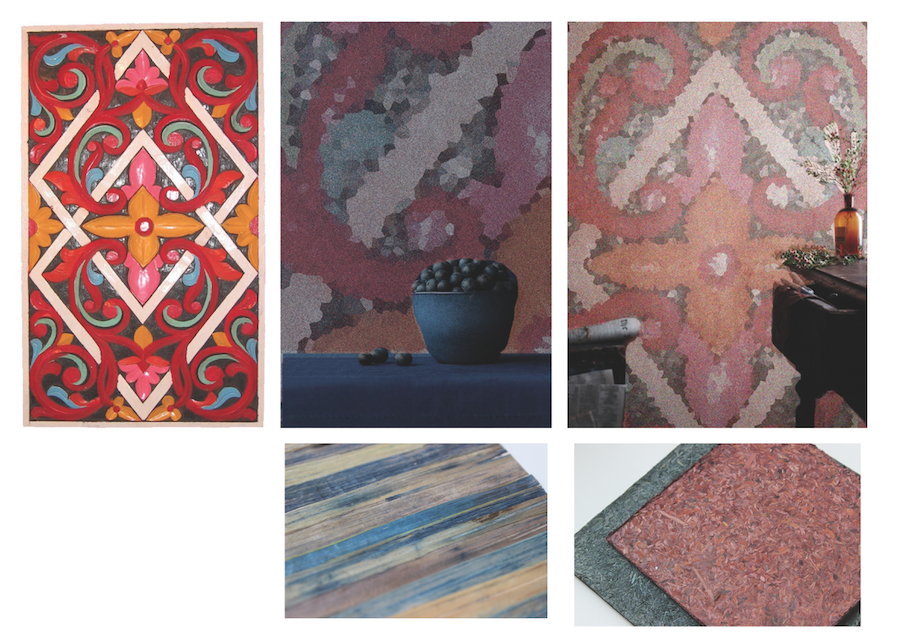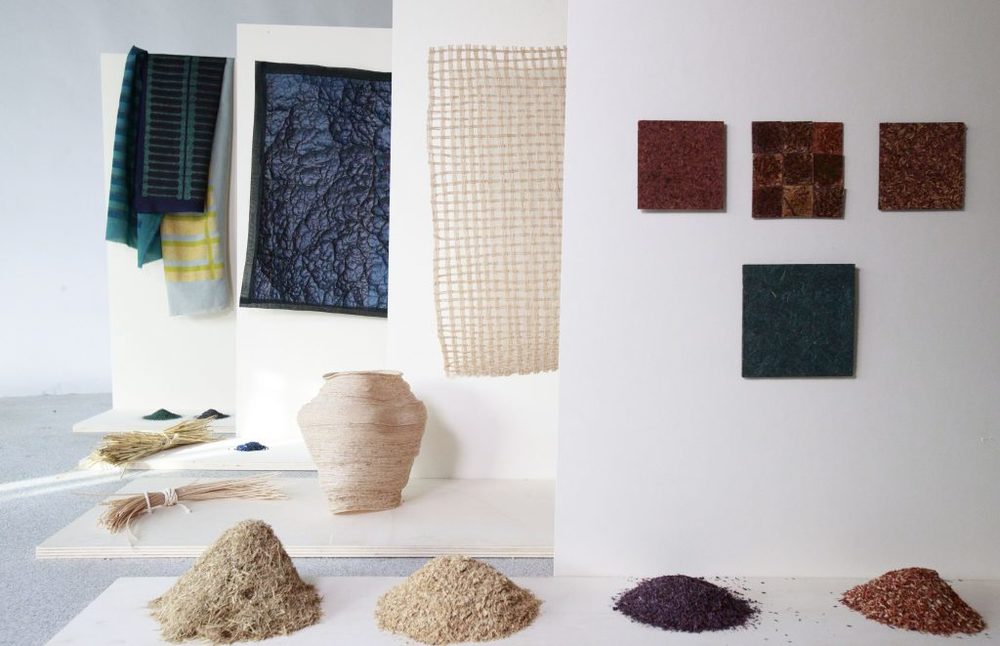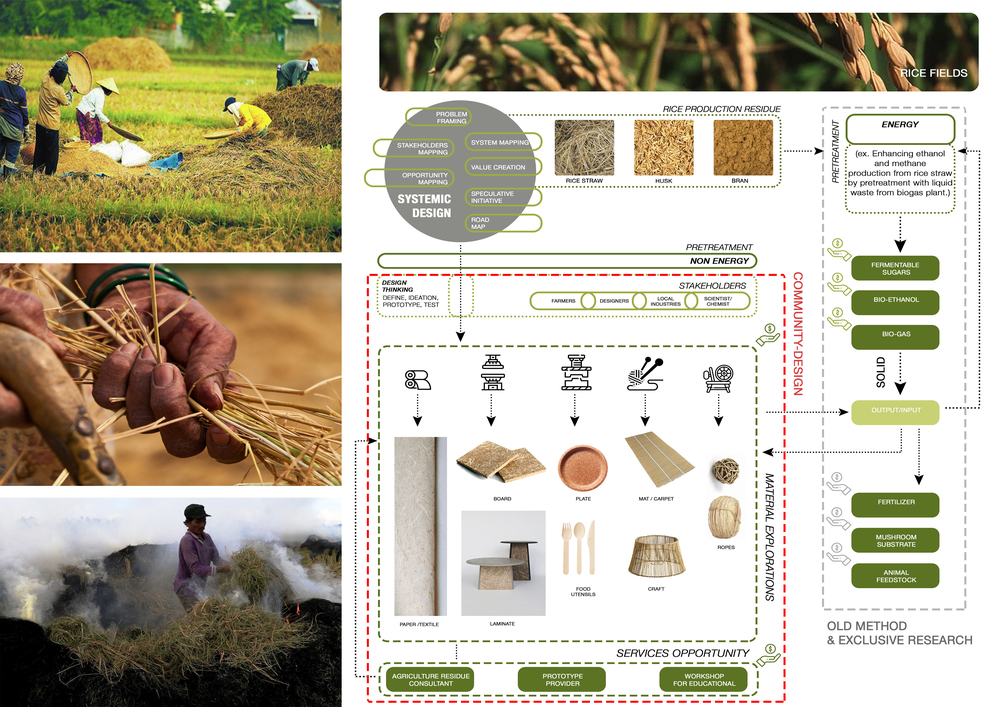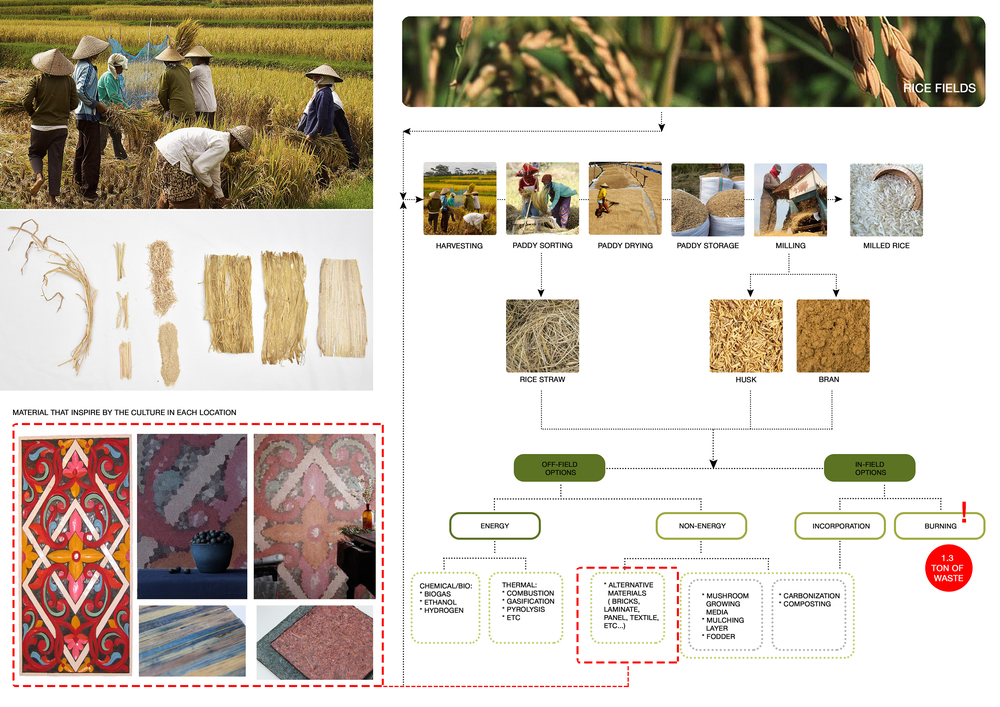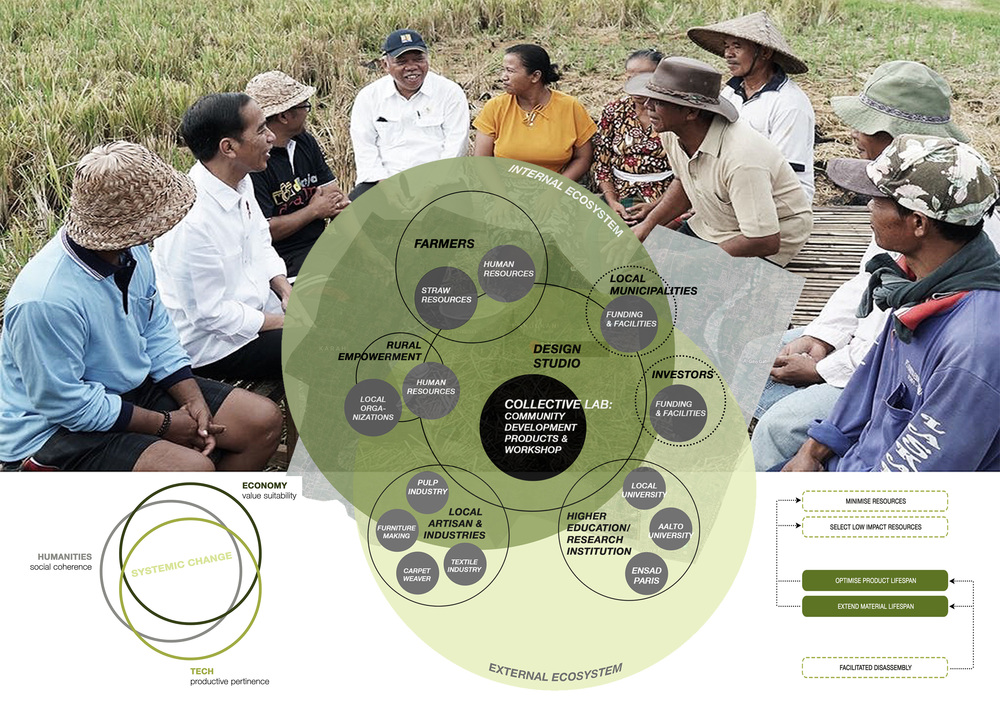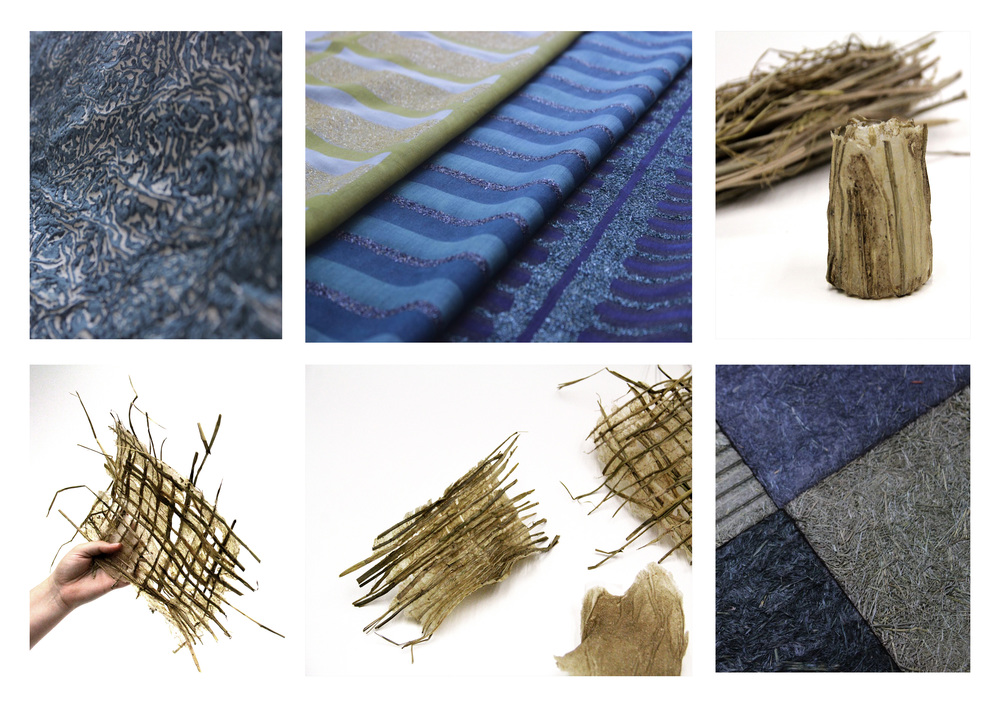Honorable Mention
Oryza Collective
Sustainable Initiative within Material Development from Rice Waste Industry
Solution
This collaboration project wants to alarm the global citizen related with our own rice consumption that there is an impact on the massive waste of rice production which lead to the open burning activity in the field is indeed need to be stopped. Furthermore, this project examined how sustainable initiative in material research can contribute to tackling the environmental issue and in particular utilize the rice straw massive residue as a potential future material for the community development.
Project Description
Oryza derived from Ancient Greek; ὄρυζα, also come from Persia and Sanskrit; the plant comes from the East. Rice is the second most-consumed cereal in the world then as a result, farmers need to deal with an environmental problem such as agriculture residue approximately up to 1.3 billion tonnes per year on a global yield scale (Indonesia), which brings another domino effect of crop burning activity. From the straw burning, it created the fine particles that throwback into the atmosphere then contribute to the phenomenon of the greenhouse effect. Within this collaborative system, we propose to develop a lab including research, product making and workshops with the local and other networks in every different area which have a similar issue. Together with the advancement of technology and science also the collaboration between different stakeholders, this project could change the problem into the solution along with the cultural value of the selected area.
Overview of the Solution
Faced with the global impact of rice straw burning, this project proposes to develop a collaborative system in the selected area to stimulate the local economy and to integrate circular economy methods to reduce waste from rice cultivation. It aims to develop in the future in another area in Asia or Europe. The project is addressing local and global communities as farmers, industry, and inhabitants. This collaboration project has an interest in the contribution of collective designers working together with the locals and other stakeholders towards the environmental issue that is currently taking place to examines how sustainable initiative in design practice can contribute to tackling the environmental issue especially utilize the rice straw residue as a potential future material for sustainable community development.
The changing environment and the crisis of product culture will urge designers as a bridging agent to adopt a new design ethic, enhance a triple-bottom-line value such as the present ecological, societal, and economic needs. Stuart Walker (2006) defines the term of rethinking material culture as a significant shift and the intention to embed sustainable design and to incorporate all stakeholders in design practice also requires a new understanding of social innovation design, systematic design, and community-centered design.
Therefore, within our collective lab we propose a design system where focusing on; Social Product-Service Design, creating the local most needed items with a collaboration with manufacturers, craftsmen, chemist/scientist and designers to be able to apply circular and collaborative economy where rice co-product being an additional source of income for farmers, local artisan, and community development; Mediation Lab, this mediation lab is a workshop format organized around the creation of objects and materials from rice crop waste that open for sharing to the public for educational contribution. Therefore, the setting up of this collaboration scenario will allow imagining solutions for the future.
The collaboration is crucial that will gather the locals, craftsmen, and entrepreneurs together doing a brainstorm, to learn the culture, to understand the problem, to share the perspective, and then collaborative ideation. We also propose to create an online platform, such as a blog as a field notebook online to share experiences, knowledge and experimental practices.
PROJECT TEAM
Talisa Dwiyani and Alexia Venot
INSTITUTION
Aalto University, School of Arts, Design, and Architecture, Finland
Category
Product/System
STAKEHOLDERS
The Collective Lab (Design Think Tank), Local Community (Farmers & residence), Craftman & Artisan within 5-10km from the location (SMEs), Research institute (Aalto University, Ensad Paris, Local University), and Local Government (BEKRAF Indonesia, Cirad Institute France)
PROJECT SOCIAL MEDIA
Instagram: @sabincollective, @alexia_venot
